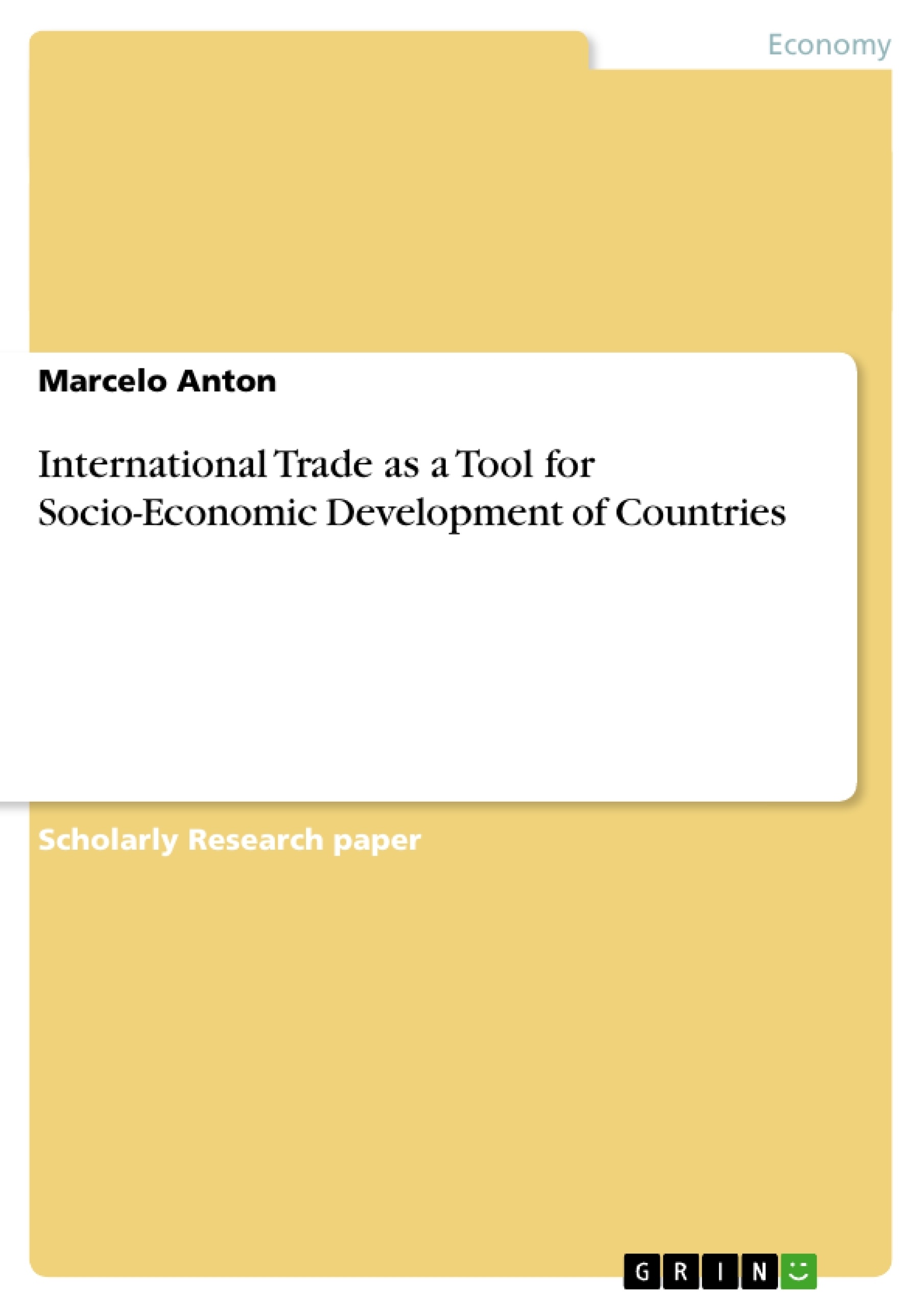In approaching the subject of this paper, a general overview of international trade, its scope, repartition and recent shifts will be presented at the outset. A natural statistic for international trade, i.e. the trading volume compared to GDP, is introduced and its shortcomings are highlighted. In attempting to improve on significance towards socio-economic considerations, more appropriate key ratios and parameters are presented and put into context by means of two examples. Effects of free trade are controversially discussed referring to work of several economists and adjoined to those of trade restrictions and closed markets. Finally, further aspects like dependency, trade and democracy as well as loss of culture are considered.
International Trade as a Tool for Socio - Economic Development of Countries
In approaching the subject of this paper, a general overview of international trade, its scope, repartition and recent shifts will be presented at the outset. A natural statistic for international trade, i.e. the trading volume compared to GDP, is introduced and its shortcomings are highlighted. In attempting to improve on significance towards socio-economic considerations, more appropriate key ratios and parameters are presented and put into context by means of two examples. Effects of free trade are controversially discussed referring to work of several economists and adjoined to those of trade restrictions and closed markets. Finally, further aspects like dependency, trade and democracy as well as loss of culture are considered.
International trade describes generally the exchange of goods and services between nations. Within the last 25 – 30 years international trade displayed an important expansion, such that the global traded value “increased by more than 7 per cent per year on average […], reaching a peak of US$ 18 trillion at the end of [2011]” (World Trade Organization, 2013, p. 5). This represents nearly a quarter of the gross world product[1] and might be due to a wide range of multinational trade agreements between nations as well as advances in technology, leading to an increase in tradable goods and logistic capabilities.
Before addressing the socio-economic impact of international trade, it is helpful to first understand its (traditional) repartition and recent apparent shifts. While trade between developed countries (North-North trade) used to be higher than 50 % of worlds trade value in the ninety-nineties, it shrank down to 36 % by 2011. North-South trade gained around five per cent and represents 38%, South-South trade (i.e. trade between developing countries) increased by 16% and reached 24% in the same time period.[2] The shift in international trade shows that certain countries gained importantly in impact in the global economy.
A rising GDP can be seen as an indicator of a country’s economic development; and it is, in turn, more or less linked to its trading activity. However, some countries are exporting a moderate 25 % or less of their GDP, whereas the relative success and wealth of others are based heavily on trade. For instance, Singapore exported about 207 % of its’ GDP value in 2011.[3] Nevertheless, trading volume in relation to GDP is not an absolute determinant for comparing countries and their socio-economic development. The USA, for example, exported only about 14 % of its GDP in 2011, which however translates to more than 60 times the value of Singapore.[4] It is therefore seen as a methodological mistake to use this number (export volume divided by GDP) as the main element for socio-economic comparison[5], better suited elements, factors and measures are called for.
[...]
[1] (Central Intelligence Agency, 2013) GWP (Gross World Product): $71.83 trillion (2012 est.); own calculation
[2] (World Trade Organization, 2013, p. 65)
[3] (The World Bank, 2013)
[4] (The World Bank, 2013)
[5] (Goulet, 1992, p. 247)
- Arbeit zitieren
- Marcelo Anton (Autor:in), 2013, International Trade as a Tool for Socio-Economic Development of Countries, München, GRIN Verlag, https://www.grin.com/document/269146
-

-

-

-
Laden Sie Ihre eigenen Arbeiten hoch! Geld verdienen und iPhone X gewinnen. -

-
Laden Sie Ihre eigenen Arbeiten hoch! Geld verdienen und iPhone X gewinnen. -

-
Laden Sie Ihre eigenen Arbeiten hoch! Geld verdienen und iPhone X gewinnen. -

-
Laden Sie Ihre eigenen Arbeiten hoch! Geld verdienen und iPhone X gewinnen. -

-
Laden Sie Ihre eigenen Arbeiten hoch! Geld verdienen und iPhone X gewinnen.

